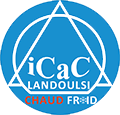(a) Learning show

We received several bumble-bee (Bombus terrestris dalmatinus) territories, for every single that features 30forty specialists, from Koppert Physiological Possibilities (Berkel dentro de Rodenrijs, Holland). Most of the specialists had been distinctively noted to your thorax having numbered, coloured labels (Opalith labels; Christian Graze Kilogram, Germany). This enjoy visitors to feel accurately known in both research training tests and you may field foraging products.
The fresh bees had been pre-trained to forage away from 20 bicoloured, bluish and you will purple, phony flowers inside the a research flight arena. New rectangular, bicoloured vegetation was basically constructed from two halves (for each and every twelve?24 mm): you to definitely red (Perspex Yellow 260) plus the most other blue (Perspex Bluish 727). During the pre-education, most of the bicoloured plant life was in fact rewarded having 50% (w/w) sucrose services providing in the past the colour-naive bees with an equal possibility to affiliate both colours which have prize (Raine https://kissbridesdate.com/filter/single-women-without-children/ et al. 2006b). Bees completing no less than five straight foraging bouts for the bicoloured plants was in fact picked getting studies. This type of foragers had been trained really, for the a trip stadium that features 10 blue (Perspex Bluish 727) and you may 10 yellow (Perspex Yellow 260) fake herbs (for every single 24?24 mm). Red flowers was in fact rewarding (per contained fifteen ?l from fifty% (w/w) sucrose services), if you are bluish herbs was blank (unrewarding). Bees had been considered opting for a rose when they often contacted (inspected) or arrived with it. Getting into the a flower failed to always trigger a feeding (probing) feel. Hence, in advance of probing a worthwhile (yellow) flower, bees you will definitely choose one another purple/satisfying or blue/unrewarding plant life of the dealing with otherwise obtaining on it (in place of probing). Opting for a yellow (rewarding) flower are regarded as correct’, while going for a blue (unrewarding) rose is actually deemed is an error’. We filed the possibility series produced by for every single bee on the go out they very first entered this new trip stadium. Tape new flower alternatives for each bee stopped shortly after they had made 99 flower possibilities adopting the first-time they probed an effective fulfilling (yellow) flower (Raine ainsi que al. 2006b). Thus, for each bee produced at the least 100 rose choices, for instance the first-time it probed a rewarding flower, and one possibilities made before that it earliest probing experiences.
Flowers have been altered as well as their ranks lso are-randomized between foraging bouts to prevent bees playing with scent scratches otherwise earlier flower positions given that predictors out-of reward. Rose colour was selected so that bees must overcome the good, unlearned taste to possess bluish, just before associating one of its innately minimum preferred tints (yellow) which have prize (Chittka mais aussi al. 2004; Raine ainsi que al. 2006a). Fifteen bees were taught of for every nest (i.elizabeth. 180 bees as a whole) between cuatro and you may . Thorax thickness dimensions were taken each of these bees because the a measure of muscles proportions. Regulated light to own laboratory studies try provided by highest-regularity neon lights (TMS 24F lamps having cuatro.step 3 kHz ballasts (Philips, The netherlands) installing that have Activa daylight hoses (Osram, Germany)) so you can imitate pure daylight above the bee flicker fusion regularity.
(b) Understanding contours
The starting point for each bee’s learning curve was the proportion of errors made (blue flowers chosen) before the bee first probed a rewarding (yellow) flower. For bees making fewer than five flower choices (either by approaching or landing on them) before probing a rewarding flower (n=53), we used the colony mean proportion of errors (calculated from bees making five or more such choices). Flower choices made by each bee after (and including) the first time it probed a rewarding (yellow) flower were evaluated as the number of errors (blue flowers chosen) in each group of 10 choices. Learning curves (first-order exponential decay functions: y=y0+Ae ?x/t ) were fitted to these 11 data points (i.e. the start pointing and subsequent 10 groups of 10 flower choices) for each individual bee, using Microcal Origin (Chittka et al. 2004; Raine et al. 2006b), to capture the dynamic nature of the learning process. Here, x is the number of flower choices the bee made, starting with the first time it probed a yellow flower, and y is the number of errors. The saturation performance level (y0) is the number of errors made by a bee after finishing the learning process, i.e. when reaching a performance plateau. The decay constant (t) is a measure of learning speed: high values of t correspond to slow learning, whereas lower t values indicate faster learners. A is the curve amplitude: the maximum displacement (height) of the curve above y0. Both amplitude (A) and saturation performance (y0) were constrained between 0 and 10 for curve fitting. Eight (out of 180) bees showed no appreciable improvement in performance during the task, and the software generated learning curves’ that were essentially horizontal lines. These bees were excluded from subsequent analyses because their t values were either very high (>400) or negative.

